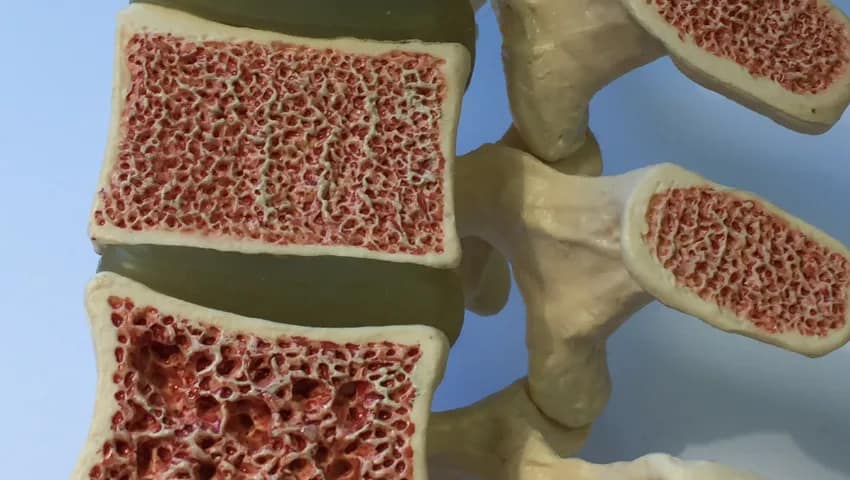PEMF for Osteoporosis: Science, Devices & Usage Guide

Welcome to my article on how to use PEMF therapy for osteoporosis.
I’m Marco Gentile, I’m a wellness professional, and I’ve spent the last decade helping people improve their health naturally. Currently, I work at the Burke Williams SPA & Wellness Center in Los Angeles, California.
Today, I want to share something that’s been a game-changer for many dealing with osteoporosis: Pulsed Electromagnetic Field Therapy (PEMF).
I’ll dive into the science behind the benefits of PEMF mats in simple terms, explore how it specifically helps with osteoporosis, and I’ll share my tested recommendations for devices that deliver results.
Best of all, I’ll walk you through a practical weekly plan that makes adding PEMF therapy to your routine as easy as brewing your morning coffee. After working with hundreds of clients, I’ve refined this approach to be both effective and doable for busy people.
Ready to discover how these gentle electromagnetic pulses might help strengthen your bones? Let’s get started on your journey to better bone health!
PEMF for Osteoporosis: How Does it Work?
Imagine your skeleton as a living, breathing construction site.
Every day, millions of tiny workers are busy remodeling—tearing down old, weakened bone tissue and building fresh, strong bone in its place.
This constant renovation is happening right now inside your body, whether you’re aware of it or not.
But what happens when this delicate balance gets disrupted? As you age, the demolition crew (cells called osteoclasts) may start working overtime while the construction team (osteoblasts) may fall behind schedule.
The result is osteoporosis—a condition where bones become increasingly fragile and prone to fractures.
Understanding Osteoporosis: The Silent Bone Thief
Osteoporosis doesn’t announce its arrival with pain or visible symptoms.
It quietly progresses until a seemingly minor bump or fall results in a broken bone.
By the time people receive a diagnosis, they’ve already lost significant bone density.
The National Osteoporosis Foundation states that around 10 million Americans have osteoporosis. Another 44 million have low bone density, which raises their risk.
This condition affects both men and women. However, women, especially after menopause, are at greater risk due to hormonal changes that speed up bone loss.
🔬PEMF for Osteoporosis: The Research
If you’re reading this, you likely already know what Pulsed Electromagnetic Field (PEMF) therapy is. It’s not just for osteoporosis—its benefits range from relaxation and better sleep to muscle recovery and meditation.
Its anti-inflammatory effect makes PEMF great for treating neuropathy, back pain, arthritis, and plantar fasciitis. More and more people are now turning to PEMF therapy for skincare, thanks to its wide range of benefits.
PEMF therapy generates gentle electromagnetic pulses that can reach deep into tissue, including bones, influencing cellular activity in beneficial ways.
Research on PEMF for osteoporosis is quite promising, but it’s still evolving. Here’s an outline of what recent science suggests. Please bear with me, I’ll try to make this as simple as possible!
🦴Improving Bone Mineral Density

A 2017 randomized, placebo-controlled trial published in F1000Research examined the effects of PEMF therapy in 95 men with osteopenia or osteoporosis. The study provides strong evidence that PEMF can help improve bone mineral density, especially when combined with exercise.
Those who used PEMF and exercised saw the biggest improvements—hip BMD went up by 2.1% and spine BMD by 3.8%. Even using PEMF alone helped, with smaller but still meaningful gains.
The group that only exercised (with a placebo device) also improved, which makes sense since exercise is known to help bone health.
Blood tests also showed good signs: the PEMF + exercise group had more of a bone-building marker (osteocalcin) and less of a bone-breakdown marker (CTX).
These benefits were still there six months later, suggesting that PEMF can give lasting support to bone strength.
Another recent systematic review has concluded that PEMF therapy can improve bone mineral density in key areas like the spine, wrist, and knee in people with osteoporosis.
Animal studies support this too—PEMF helped strengthen bones and improve their structure by boosting bone formation and reducing bone loss. In rats with disuse osteoporosis, it also promoted new bone growth and prevented further bone breakdown.
🦴Enhancing the Bone Remodeling Process
A 2020 study published in the Journal of AAOS has shown that PEMF helps fight osteoporosis by working through multiple beneficial pathways in the body. It does that in two key ways:
- Supporting bone growth (pro-anabolic)
- Slowing down bone loss (anti-catabolic)
This was also shown by a 2002 study published in Bioelectromagnetics. The study demonstrates that PEMF enhances bone formation capacity, which is critical for reversing bone loss in osteoporosis.
This gives osteoblasts, the cells that build bone, more energy to create new bone tissue.
🧪Improving Calcium Utilization
Calcium plays a key role in keeping bones strong and healthy, as nearly 99% of the body’s calcium is stored in the bones and teeth to support their structure.
As shown by a 2017 study published in Bioelectromagnetics, PEMF supports bone growth by helping the body use calcium more effectively — a key issue in postmenopausal osteoporosis, where calcium balance is often disrupted.
The study links PEMF to calcium-mediated osteogenesis, which is the process of bone formation (osteogenesis) that depends on calcium signaling in the body.
🩸Increasing Blood Flow

Healthy bones need good circulation to receive essential nutrients and remove waste products.
PEMF may help by supporting blood flow in the tiny vessels around bone tissue. This is shown by a 2014 study published in the Journal of Neurosurgery.
A 2024 article on Frontiers in Sports and Active Living also concluded that PEMF may increase blood flow and enhance oxygen levels. The article details the mechanisms behind these effects, noting that PEMF increases vessel diameter and promotes nitric oxide production, which leads to vasodilation.
Better blood flow means your bone cells have the resources they need to maintain and rebuild bone tissue effectively.
🌿Reducing Inflammation
Chronic inflammation can accelerate bone loss and interfere with the bone-building process.
One fascinating study published in 2014 in the Journal of Inflammation Research found that PEMF therapy can lower inflammatory markers like C-reactive protein (CRP), which often rises in those with chronic pain.
PEMF’s anti-inflammatory action protects against a process called “resorption”, which is when the body breaks down and absorbs existing tissue, like bone, so the materials (like calcium) can be reused elsewhere.
PEMF Compared to Traditional Osteoporosis Treatments
No single approach offers a complete solution for osteoporosis. Here’s how PEMF compares with other common strategies:
-
Weight-bearing and resistance exercises – They put healthy stress on bones, signaling them to become stronger. This has robust scientific support.
-
Supplements – Calcium, vitamin D, protein, and other nutrients provide essential building blocks for bone. This nutritional foundation is critical for any bone health plan.
-
Medications – Bisphosphonates and other drugs can slow down bone loss. However, they may cause side effects, such as digestive problems or complications.
PEMF is non-invasive and drug-free. You can use it with medications, so it won’t add to side effects. It works alongside nutritional efforts by potentially helping cells utilize the nutrients you consume.
PEMF can also enhance your exercise benefits by supporting recovery and creating a favorable cellular environment.
The Bottom Line: PEMF therapy is not a replacement for traditional osteoporosis treatments. Instead, it works best as a complementary approach, helping to support bone health alongside your primary treatment plan.
PEMF for Osteoporosis: Infographic

Choosing the Best PEMF Device for Osteoporosis
Choosing the right device for treating your osteoporosis with PEMF therapy is straightforward.
Unlike bone fractures, osteoporosis affects your entire body. This means that localized options won’t suffice. You’ll need a full-body mat or something similar, like a chair mat.
PEMF pads and wearables simply can’t provide the necessary coverage. What you need is a device capable of delivering PEMF therapy to your whole body.
1. PEMF Mats

Mats are the most obvious option for treating osteoporosis with PEMF. They provide full-body coverage, which is exactly what you need.
While they can be expensive and not particularly portable, tackling osteoporosis typically requires long-term treatment, which is best done at home. So, it’s unlikely that you’ll need to take your mat with you on the go.
Not sure where to start with PEMF mats? My roundup of the 26 best mats can guide you. These are the top 3 that came out on top:

HealthyLine JET

OMI PEMF Beyond

Therasage TheraPro
2. PEMF Chair Mats

Chair mats are comparable to standard PEMF mats in terms of price and portability, but they offer a significant advantage: they’re designed for use while sitting.
Whether you’re working at your desk or relaxing in front of the TV, a chair mat integrates easily into your daily routine. If you’re looking to do your osteoporosis treatments while working or sitting for extended periods, this could be the ideal option.
However, the downside is that it doesn’t allow you to target certain areas of the body, such as the feet, ankles, neck, and head.
If you are interested in PEMF chair mats, please check out my guide to the 7 best PEMF therapy chair mats! You’ll surely find the right one for you!
Here are my top 3 picks for PEMF chair mats that are best suited to treat osteoporosis:

HealthyLine JET Chair

HealthyLine Rainbow Chakra Chair

Grooni Earthing PEMF Infrared Mat Pro
📅 Using PEMF Therapy for Osteoporosis: My Weekly Schedule (Tried and Tested)
If you’re looking to tackle your osteoporosis with PEMF therapy, this straightforward weekly plan removes the guesswork from your treatment routine.
Are you new to PEMF? Let me quickly define frequency and intensity:
-
Frequency, measured in Hertz (Hz), refers to the number of electromagnetic pulses delivered per second by a PEMF device. In simple terms, it determines how fast the pulses occur.
-
Intensity represents the strength of the electromagnetic field emitted by the PEMF device. Most devices use Gauss (G) and MicroTesla (µT) in their user manual and controllers or phone apps. So I have included both in the table.
Based on research studies and clinical evidence regarding PEMF therapy for osteoporosis management, I’ve crafted a balanced approach that is both effective and safe, following widely supported protocols.
Weekly PEMF Therapy Plan for Osteoporosis
| Day | Sessions | Frequency | Intensity | Duration | Notes |
|---|---|---|---|---|---|
| Monday | 1 | 10 Hz | 200 μT 2 G | 30 min | Best performed in the morning to stimulate bone formation. |
| Tuesday | 1 | 15 Hz | 150 μT 1.5 G | 30 min | Combine with exercises (e.g., walking or light resistance). |
| Wednesday | Rest | – | – | – | Allow recovery and natural bone remodeling processes. |
| Thursday | 1 | 5 Hz | 200 μT 2 G | 30 min | Include flexibility or balance exercises post-session. |
| Friday | 1 | 10 Hz | 100 μT 1 G | 30 min | Focus on aerobic activities like brisk walking after PEMF therapy. |
| Saturday | Rest | – | – | – | Recovery day to avoid overstimulation. |
| Sunday | 1 | 20 Hz | 150 μT 1.5 G | 30 min | Perform in the evening to support relaxation and bone healing overnight. |
Additional Info
-
Duration: Follow a cycle of 12 weeks, as supported by studies showing significant improvements in Bone Mineral Density (BMD) after this period.
-
Maintenance Phase: After completing the initial cycle, reduce sessions to 2-3 times per week for ongoing maintenance. Continue for at least six months or as advised by a healthcare provider.
-
Regularly monitor progress through BMD tests (e.g., DXA scans) every three to six months.
-
Adjust frequency or duration based on individual response and physician recommendations.
-
Consult a healthcare provider before starting or modifying the plan, especially if other medical conditions are present.
Flexible Guidelines for Incorporating PEMF for Osteoporosis in Your Daily Routine
If strict schedules aren’t your thing, no problem! Here’s a more flexible way to incorporate PEMF therapy into your life and still see great results. You can adjust it to fit your needs—whether you prefer morning sessions to start your day or evening treatments to wind down. It’s all about what works best for you!
- Frequency and Intensity:
- Use frequencies between 5 and 20 Hz.
- Keep intensity below 200 μT / 2 G to ensure safety and effectiveness.
- Session Timing:
- Morning sessions are ideal for stimulating bone formation.
- Evening sessions can support relaxation and bone healing.
- Session Duration:
- Aim for at least 30 minutes per session, with a maximum of one session per day.
- Rest Days:
- Include at least two rest days per week to allow natural bone remodeling.
- Combination with Exercise:
- Combine PEMF therapy with exercises such as walking, light resistance training, or balance exercises to enhance results.
- Dietary Support:
- Ensure adequate intake of calcium, vitamin D, and magnesium to support bone health.
- Consult a nutritionist if needed.
By sticking to this plan or adjusting it to fit into your daily routine, you can make the most out of PEMF therapy for managing osteoporosis.
This approach is designed to be both safe and effective, grounded in the latest research findings, so you can feel confident in your treatment while seeing real benefits.
FAQs
PEMF therapy is generally safe for most people; however, certain exceptions exist. Those with pacemakers, insulin pumps, or other implanted medical devices, as well as individuals who are pregnant, should avoid using PEMF due to potential risks.
For more information, refer to our comprehensive article on PEMF side effects, contraindications, and safety guidelines.
In most cases, you don’t need a prescription to use a PEMF device for osteoporosis at home, especially if the device is FDA-approved for general wellness or bone health. However, if you’re looking for a medical-grade system or have specific health concerns, it’s a good idea to consult your healthcare provider before starting therapy.
🔬Scientific Evidence

ABOUT THE AUTHOR
Marco Gentile
Marco Gentile (CHC, CMT, CTP, CETS) is a seasoned wellness professional with over 10 years of experience helping clients achieve optimal health and longevity. Currently, he works at the Burke Williams Spa – Health, Wellness & Fitness Center in Los Angeles, where he continues to inspire and support individuals on their wellness journeys.







